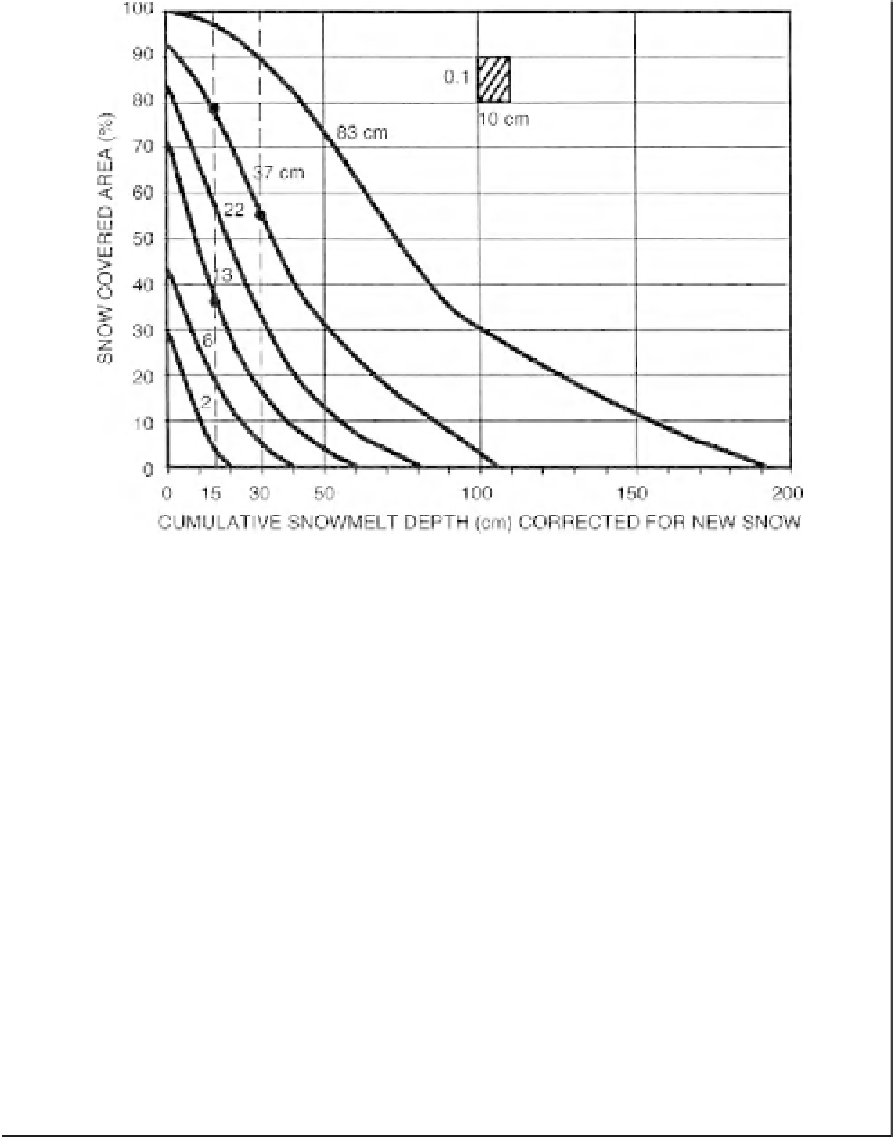Geoscience Reference
In-Depth Information
Figure B3.3.3
Depletion curves of snow-covered area for different mean snowpack water equivalent in
a single elevation zone (2926-3353m elevation range, 1284 km
2
) of the Rio Grande basin (after Rango,
1995, with kind permission of Water Resource Publications).
the albedo and long wave outgoing radiation of the pack to be estimated. Differences in the
radiation regime for different slope aspects can be accommodated within this modification. It
does, however, take account of the changing radiation regime through the melt season so that
the coefficient
F
∗
shows much less variation than
F
over the season.
Kustas
et al.
(1994) have extended this further to a more complete energy balance melt
model for use within SRM. Rango and Martinec (1995) point out that the degree-day method
will continue to be used “not so much because of its simplicity but because of its modest
data requirements”. They suggest that the results, averaged over periods of a few days or
routed through a runoff model on a large catchment, are comparable in accuracy to the more
complex energy budget models available.
The assumptions of the degree-day method tend to vary with the implementation but the
most important may be summarised as follows:
A1 Predicted snowmelt from a ripe snowpack is a linear function of the difference between
local mean daily temperature and a threshold temperature.
A2 The degree-day factor will tend to increase as the melt season progresses.
A3 Variation in snow-covered areas can be taken into account by using local depletion curves
or remote sensing.

